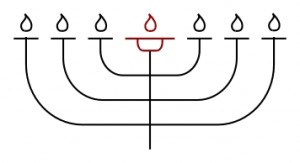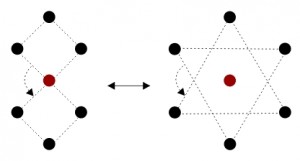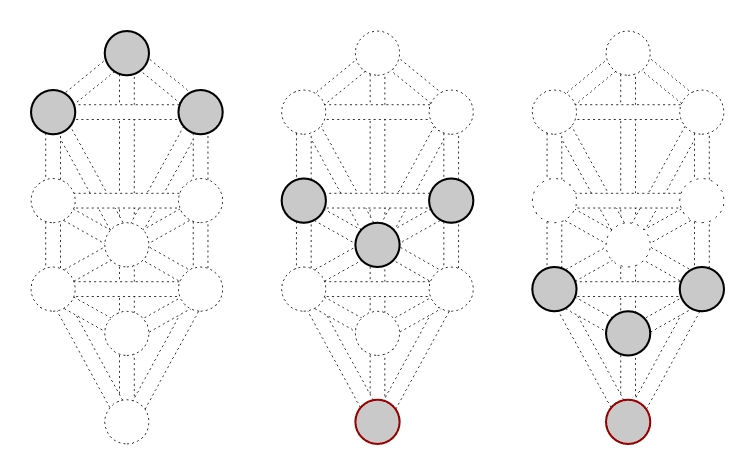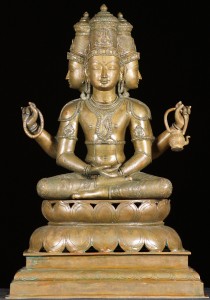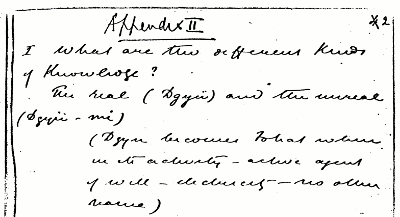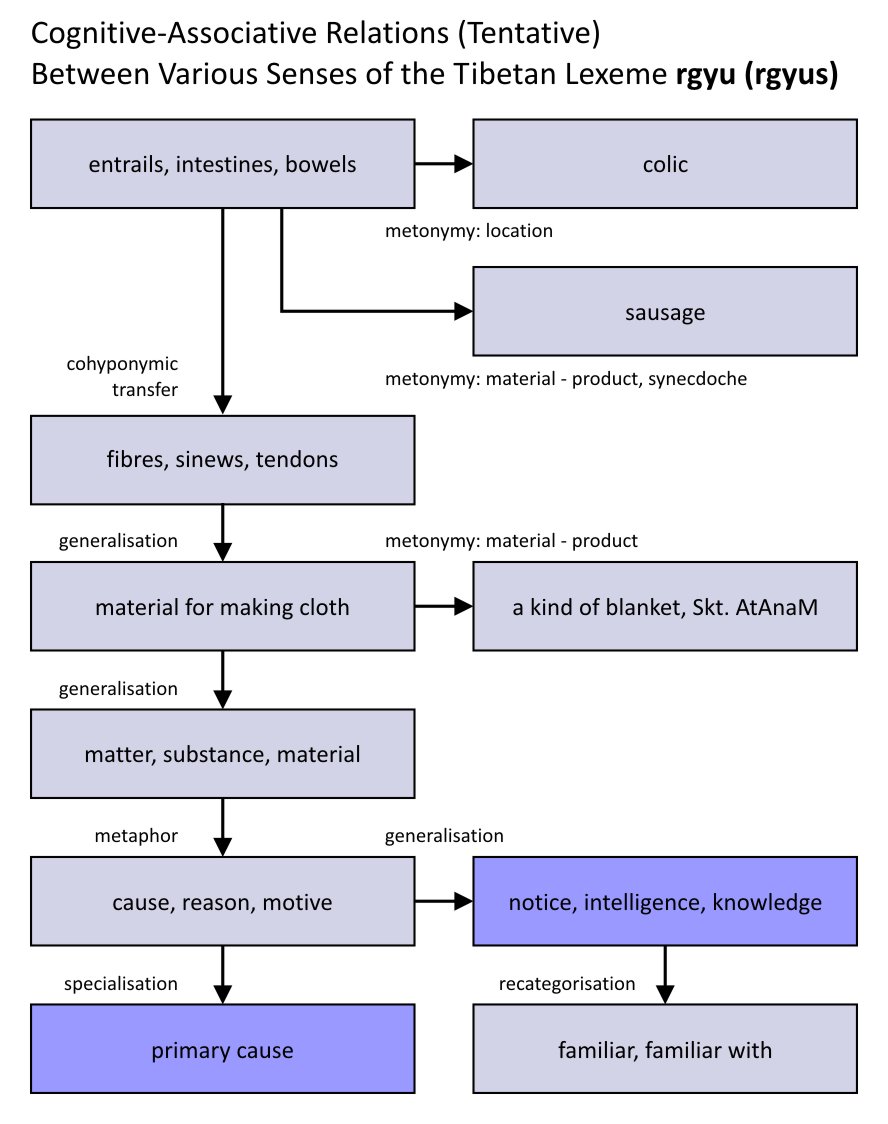A remarkable story about King Thevetat of Atlantis is given by H. P. Blavatsky in her 1877 book, Isis Unveiled. Although this king was the source of the “evil” that made his people “wicked,” they were not wicked due to any evil intent. They, and he, were simply natural-born seers and magicians, and lacked the restraining influence that systematic training would have given them. Here is the story (vol. 1, pp. 589-594):
“Tradition says, and the records of the Great Book explain, that long before the days of Ad-am, and his inquisitive wife, He-va, where now are found but salt lakes and desolate barren deserts, there was a vast inland sea, which extended over Middle Asia, north of the proud Himalayan range, and its western prolongation. An island, which for its unparalleled beauty had no rival in the world, was inhabited by the last remnant of the race which preceded ours. This race could live with equal ease in water, air, or fire, for it had an unlimited control over the elements. These were the ‘Sons of God’; not those who saw the daughters of men, but the real Elohim, though in the Oriental Kabala they have another name. It was they who imparted Nature’s most weird secrets to men, and revealed to them the ineffable, and now lost ‘word.’ This word, which is no word, has travelled once around the globe, and still lingers as a far-off dying echo in the hearts of some privileged men. The hierophants of all the Sacerdotal Colleges were aware of the existence of this island, but the ‘word’ was known only to the Yava Aleim, or chief lord of every college, and was passed to his successor only at the moment of death. There were many such colleges, and the old classic authors speak of them.
. . . . . . . . . .
“There was no communication with the fair island by sea, but subterranean passages known only to the chiefs, communicated with it in all directions. Tradition points to many of the majestic ruins of India, Ellora, Elephanta, and the caverns of Ajanta (Chandor range), which belonged once to those colleges, and with which were connected such subterranean ways. Who can tell but the lost Atlantis—which is also mentioned in the Secret Book, but, again, under another name, pronounced in the sacred language—did not exist yet in those days? The great lost continent might have, perhaps, been situated south of Asia, extending from India to Tasmania? If the hypothesis now so much doubted, and positively denied by some learned authors who regard it as a joke of Plato’s, is ever verified, then, perhaps, will the scientists believe that the description of the god-inhabited continent was not altogether fable. And they may then perceive that Plato’s guarded hints and the fact of his attributing the narrative to Solon and the Egyptian priests, were but a prudent way of imparting the fact to the world and by cleverly combining truth and fiction, to disconnect himself from a story which the obligations imposed at initiation forbade him to divulge.
. . . . . . . . . .
“To continue the tradition, we have to add that the class of hierophants was divided into two distinct categories: those who were instructed by the ‘Sons of God,’ of the island, and who were initiated in the divine doctrine of pure revelation, and others who inhabited the lost Atlantis—if such must be its name—and who, being of another race, were born with a sight which embraced all hidden things, and was independent of both distance and material obstacle. In short, they were the fourth race of men mentioned in the Popol-Vuh, whose sight was unlimited and who knew all things at once. They were, perhaps, what we would now term ‘natural-born mediums,’ who neither struggled nor suffered to obtain their knowledge, nor did they acquire it at the price of any sacrifice. Therefore, while the former walked in the path of their divine instructors, and acquiring their knowledge by degrees, learned at the same time to discern the evil from the good, the born adepts of the Atlantis blindly followed the insinuations of the great and invisible ‘Dragon,’ the King Thevetat (the Serpent of Genesis?). Thevetat had neither learned nor acquired knowledge, but, to borrow an expression of Dr. Wilder in relation to the tempting Serpent, he was ‘a sort of Socrates who knew without being initiated.’ Thus, under the evil insinuations of their demon, Thevetat, the Atlantis-race became a nation of wicked magicians. In consequence of this, war was declared, the story of which would be too long to narrate;1 its substance may be found in the disfigured allegories of the race of Cain, the giants, and that of Noah and his righteous family. The conflict came to an end by the submersion of the Atlantis; which finds its imitation in the stories of the Babylonian and Mosaic flood: The giants and magicians ‘. . . and all flesh died . . . and every man.’ All except Xisuthrus and Noah, who are substantially identical with the great Father of the Thlinkithians in the Popol-Vuh, or the sacred book of the Guatemalans, which also tells of his escaping in a large boat, like the Hindu Noah—Vaivasvata.
“If we believe the tradition at all, we have to credit the further story that from the intermarrying of the progeny of the hierophants of the island and the descendants of the Atlantean Noah, sprang up a mixed race of righteous and wicked. On the one side the world had its Enochs, Moseses, Gautama-Buddhas, its numerous ‘Saviours,’ and great hierophants; on the other hand, its ‘natural magicians’ who, through lack of the restraining power of proper spiritual enlightenment, and because of weakness of physical and mental organizations, unintentionally perverted their gifts to evil purposes. Moses had no word of rebuke for those adepts in prophecy and other powers who had been instructed in the colleges of esoteric wisdom mentioned in the Bible. His denunciations were reserved for such as either wittingly or otherwise debased the powers inherited from their Atlantean ancestors to the service of evil spirits, to the injury of humanity. . . .”
Such is the story about King Thevetat of Atlantis given by H. P. Blavatsky in her 1877 book, Isis Unveiled. Further on in Isis Unveiled we are able to see where the name Thevetat came from (vol. 2, p. 576). Blavatsky refers to an “old book, published in 1693 and written by the Sieur de La Loubère, French Ambassador to the King of Siam,” from which she “will quote his words about the Siamese Savior—Sommona-Codom”:
“How marvellous soever they pretend the birth of their Saviour has been, they cease not to give him a father and a mother. His mother, whose name is found in some of their Balie (Pali?) books, was called, as they say, Maha MARIA, which seems to signify the great Mary, for Maha signifies great. However it be, this ceases not to give attention to the missionaries, and has perhaps given occasion to the Siamese to believe that Jesus being the son of Mary, was brother to Sommona-Codom, and that, having been crucified, he was that wicked brother whom they give to Sommona-Codom, under the name of Thevetat, and whom they report to be punished in Hell, with a punishment which participates something of a cross. . . .”
The Siamese Savior that Monsieur de La Loubère is speaking about is of course the Buddha. His phonetic rendering “Sommona-Codom” from the “Balie” or Pali language represents what in modern transliteration is “samaṇa Gotama.” We can now see that “Thevetat,” as spelled in the 1693 English translation,2 or “Tevetat,” as spelled in the 1691 French original,3 is “Devadatta,” the wicked cousin of Gotama Buddha.
Devadatta is the archetypical “bad guy” in Buddhist writings. He had been a Buddhist monk of high standing and great austerity, and had achieved psychic powers befitting his advanced stage. According to all accounts, he tried to form a schism in the Buddhist order. This is a very serious offense for a Buddhist monk. In some accounts, he even tried to kill the Buddha. His name evokes an image of the greatest enemy of the Buddha and the Buddhist order. Significantly, the Buddhist writings include a number of jātaka stories involving him, stories of previous births, showing that he had been in conflict with the Buddha in past lives as well.
The story about King Thevetat of Atlantis given in 1877 in Isis Unveiled was then referred to in an 1883 article, “Leaflets from Esoteric History,” unsigned but said to have been written or caused to be written by a Mahatma, one of the teachers behind the Theosophical movement. There, like in The Secret Doctrine where Blavatsky repeats this story with additional explanations (vol. 2, pp. 220-222), we also find the spelling Thevetata. This spelling is used in this article in the plural, to refer to gods in the Etruscan pantheon as remnants of the Atlantean gods who were followers of King Thevetat:
“On page 593 of Isis, Vol. I, the Thevetatas—the evil, mischievous gods that have survived in the Etruscan Pantheon—are mentioned, along with the ‘sons of god’ or Brahma Pitris. The Involute, the hidden or shrouded gods, the Consentes, Complices, and Novensiles, are all disguised relics of the Atlanteans; while the Etruscan arts of soothsaying their Disciplina revealed by Tages comes direct, and in undisguised form from the Atlantean King Thevetat, the ‘invisible’ Dragon, whose name survives to this day among the Siamese and Burmese, as also, in the Jataka allegorical stories of the Buddhists as the opposing power under the name of Devadat. And Tages was the son of Thevetat, before he became the grandson of the Etruscan Jupiter-Tinia.”4
This makes the direct connection between the story about King Thevetat of Atlantis and the allegorical stories of the Buddhists about Devadat, i.e., Devadatta. As we have seen, the name Tevetat/Thevetat is only a 1691/1693 phonetic rendering of the name Devadatta from the Pali. It is exactly the same in Sanskrit, Devadatta, and also in the early so-called Buddhist hybrid Sanskrit (e.g., in the Mahāvastu). Devadatta means “given by the gods.” There are no known variants of this name in the Buddhist texts. The Atlantean King Thevetat, i.e., Devadatta, would have been the prototype for the later character of this name, and sometimes even of other names. The connection with gods of the Etruscan pantheon serves to show that the story has been preserved in other places, even if the names have been changed. It is the age-old story of the conflict between good and evil, but with a very important difference. In this story, evil is the result of using naturally-occurring higher faculties without undergoing the necessary training for their proper use. This evil is not the obvious evil of selfishness, greed, aggression, etc., but rather is the more subtle evil of following a wrong spiritual path.
According to this story, from the time of King Thevetat/Devadatta onward there have been in the world two opposed hierarchies of spiritual teachings. By giving the story about King Thevetat/Devadatta of Atlantis, Blavatsky made publicly known the existence of these two distinct classes of hierophants, and their continued existence up to the present through their spiritual descendants. Here we may find the reason for something that has long puzzled students of Theosophy, namely, the opposition shown in the Mahatma letters to the so-called “Red Hats,” i.e., the orders of Tibetan Buddhism other than the Gelugpas or “Yellow Hats.”5 This seems to be diametrically opposed to brotherhood, the first object of the Theosophical Society: “To form a nucleus of the universal brotherhood of humanity, without distinction of race, creed, sex, caste or colour.” Moreover, in recent decades many people in the West have come into contact with “Red Hat” lamas, teachers who are obviously good and often saintly individuals. They do not teach anything that we would call black magic, but rather they teach kindness and compassion, just like the “Yellow Hat” lamas do. Some of their other teachings, however, were apparently regarded by the Theosophical Mahatmas as inheritances from King Thevetat/Devadatta of Atlantis.
Since Atlantis is still in the realm of myth rather than history, all means of tracing the descent of the spiritual teachings from the two opposed classes of hierophants spoken of in the story about King Thevetat/Devadatta are closed to us. Since the Theosophical Mahatmas only stated their opposition to the “Red Hats” in the Mahatma letters, but did not explain it, we are left to put two and two together and make our own deductions about it. Is there in known historical times anything that would link the teachings attributed to King Thevetat/Devadatta in the story and the distinctive teachings of the “Red Hats”? Yes, there are three pivotal events in the spread of Buddhism to China and Tibet that show such a link. We must know that the Theosophical Mahatmas opposed quietism, which was described in a Mahatma letter as “that utter paralysis of the Soul.”6 In relation to the story about King Thevetat/Devadatta, quietism means using one’s natural intuitional faculties to achieve spiritual knowledge, “instead of becoming a neophyte, and gradually obtaining his esoteric knowledge through a regular initiation.”7 The contrast between these two approaches to spiritual practice has played out in historical times in a series of pivotal events in the spread of Buddhism.
Buddhism was born in India, and was carried to China in the early centuries of the first millennium C.E. There, Buddhism was adapted to the Chinese temperament,8 most notably as Chan, or Zen as it became in Japan and by which it is now known in the West. The decisive moment in the history of Chan/Zen Buddhism occurred in the seventh century C.E., when, as recorded in the highly influential Platform Sūtra, Huineng successfully laid claim to be the real Sixth Patriarch. Although modern scholarship has discredited much of this account, the fact remains that Chan/Zen developed along the lines indicated in this account from then up to the present. According to this account, the Fifth Patriarch’s main disciple Shenxiu wrote a verse to demonstrate his competence to become the Sixth Patriarch: “The mind is like a mirror; it must be polished every day.” Then Huineng wrote a verse demonstrating that it was he, not Shenxiu, who had the real understanding, saying in effect: “What mind? What mirror?” In this way, Shenxiu’s teaching of gradual enlightenment, accompanied by cultivation of the mind, was replaced by Huineng’s teaching of sudden enlightenment, dispensing with training the mind.
Buddhism was carried to Tibet in the later centuries of the first millennium C.E. Around the year 800 C.E., a great debate was held at Samye (bsam yas), Tibet, to determine which form of Buddhism would be adopted in Tibet, Indian or Chinese. The decisive moment in the history of Tibetan Buddhism occurred when Kamalaśīla won this debate on behalf of the Indian faction, teaching the gradual path, the path of mental development. The defeated Chinese faction was teaching sudden enlightenment, which was said to occur without disciplining the mind. This has usually been described as a kind of quietism. The parallel with the description of the Atlanteans who did not exert effort to obtain their enlightenment is obvious. The king of Tibet then decreed that only Indian Buddhism would be adopted in Tibet, and Chinese Buddhism would not be allowed.
By the time of Sakya Paṇḍita, 1182-1251, allegations had begun to surface that the Chinese quietism teachings were reappearing in Tibet in the guise of some (not all) Dzogchen and Mahāmudrā teachings.9 These concerns continued to the time of Tsongkhapa, 1357-1419, who founded the Gelugpa or “Yellow Hat” order in contrast to the previously existing orders, the so-called “Red Hat” orders. Tsongkhapa decisively steered the course for Buddhism in Tibet from then up to the present with his powerful promulgation of the graded path, lam rim, and its emphasis on mental development.10 The previously existing Sakya order, of which Sakya Paṇḍita was a major teacher, was also known for its emphasis on mental development. The previously existing Nyingma and Kagyu orders did not leave out mental development, and all of the orders of Tibetan Buddhism shared the core teaching of developing compassion and working for the sake of others. Nonetheless, the Nyingma and Kagyu orders are most known for their characteristic teachings of Dzogchen and Mahāmudrā, respectively. It is some of these two teachings (again, not all) that were regarded by Sakyapas and Gelugpas as forms of quietism, like the Chan/Zen teachings that had been prohibited in Tibet after the Samye debate.
Here we apparently have the reason for the opposition shown in the Mahatma letters to the so-called “Red Hats.” Some of their characteristic Dzogchen and Mahāmudrā teachings are close enough to the kinds of teachings described in the story about King Thevetat/Devadatta of Atlantis to be considered holdovers or inheritances from them. It is the age-old story of the conflict between good and evil, but here seen in terms of two opposing spiritual paths taught by two opposing spiritual hierarchies. This was considered to be so important that war was reportedly fought over it in Atlantis. Despite the unquestioned need for tolerance and mutual respect, the Theosophical Mahatmas by their opposition to the “Red Hats” clearly placed themselves on the one side as the spiritual descendants of the righteous hierophants of Atlantis, and clearly distinguished themselves from the other side.
Notes:
- This story is given in The Secret Doctrine, by H. P. Blavatsky (1888), vol. 2, pp. 427-428.
- “The Life of Thevetat, tranflated from the Balie,” in A New Hiftorical Relation of the Kingdom of Siam, by Monfieur de La Loubere (London, 1693, English translation from French), vol. 2, pp. 145-157.
- “La Vie de Tevetat, Traduitte du Bali,” in Du royaume de Siam, par Monsieur de La Loubere (Paris, 1691), vol. 2, pp. 1 ff. (Amsterdam edition, pp. 1-26.).
- The Theosophist, vol. 5, no. 1, Oct. 1883, p. 9 or 10; reprinted in H. P. Blavatsky Collected Writings, vol. 5, p. 222. The names of the gods of the Etruscan pantheon used here can be found in Library of Universal Knowledge (based on Chambers’s Encyclopaedia), vol. 5 (New York, 1880), p. 571:
“. . . the Etruscans . . . . In their pantheon, the predominance belongs to the evil, mischievous gods; . . . . They divide their gods into two classes, and they place them in the most northern, and therefore most immovable point of the world, whence they can best overlook it. The upper section is formed by shrouded, hidden gods (Involuti), of uncertain number, who act awfully and mysteriously, and twelve lower gods of both sexes, called Consentes, Complices. Tinia (Zeus, Jupiter) is the chief of these latter, and stands between the two divisions of the gods, receiving orders for destruction from the upper ones, while the lower ones form his ordinary council, and obey his behests. Nine of these (Novensiles) hurl lightnings at various times and with peculiar effects. . . . Gods most peculiarly Etruscan are Vejovis, an evil Jupiter, whose thunder-bolts have the power to deafen, and Nortia, the goddess of fate, also called Lasa Mean. . . . Characteristic in the highest degree is their “disciplina” or art of “divination.” This had been revealed by Tages, a grandson of Jupiter, . . .”
- The Mahatma Letters to A. P. Sinnett, compiled by A. T. Barker (3rd rev. ed., 1962). See, for example, from Mahatma letter #49 (3rd ed., p. 280):
“We feel that the time is approaching, and that we are bound to choose between the triumph of Truth or the Reign of Error and—Terror. We have to let in a few chosen ones into the great secret, or—allow the infamous Shammars to lead Europe’s best minds into the most insane and fatal of superstitions—Spiritualism; and we do feel as if we were delivering a whole cargo of dynamite into the hands of those, we are anxious to see defending themselves against the Red Capped Brothers of the Shadow. . . . Having then, to deliver with one hand the much needed yet dangerous weapon to the world, and with the other to keep off the Shammars (the havoc produced by them already being immense) do you not think we have a right to hesitate, to pause and feel the necessity of caution, as we never did before?”
Shammar, Tibetan zhwa dmar, means “red hat.” A word incorrectly used for the “Red Hats” in English language books in the late 1800s, and copied by Theosophical writers, is “dugpa,” Tibetan ’brug pa. This is the name of only one particular “Red Hat” order (see my 2009 article, “Who Are the Dugpas in Theosophical Writings?”: http://www.katinkahesselink.net/his/dugpas-drugpas-blavatsky.pdf). See also, for example, from Mahatma letter #47 (3rd ed., pp. 268-269):
“Only, look out sharp; the Dugpas and the Gelukpas are not fighting but in Tibet alone; see their vile work in England among the ‘Occultists and seers’! Hear your acquaintance Wallace preaching like a true ‘Hierophant’ of the ‘left hand’ the marriage of ‘soul with the spirit’ and getting the true definition topsy-turvy, seeking to prove that every practising Hierophant must at least be spiritually married—if for some reasons he cannot do so physically—there being otherwise a great danger of Adulteration of God and Devil! I tell you the Shammars are there already and their pernicious work is everywhere in our way. Do not regard this as metaphorical but as a real fact, which may be demonstrated to you some day.”
- The Mahatma Letters to A. P. Sinnett, letter #28: “They are of the Universal Brotherhood but in name, and gravitate at best towards Quietism – that utter paralysis of the Soul.”
- The Secret Doctrine, vol. 2, p. 202: “Instead of becoming a neophyte, and gradually obtaining his esoteric knowledge through a regular initiation, an Adam, or Man, uses his intuitional faculties and, prompted by the serpent (Woman and matter), tastes of the Tree of Knowledge — the esoteric or Secret Doctrine — unlawfully.”
- The Chinese temperament is closer to the Atlantean, according to The Secret Doctrine, because the Chinese people inhabit fourth root-race bodies and have fourth root-race psychological natures. The Secret Doctrine teaches that the fourth root-race developed in Atlantis, and thus the fourth root-race is called the Atlantean. Although the Tibetan people are racially akin the Chinese people, the Tibetans chose to adopt Indian Buddhism rather than Chinese Buddhism, and The Secret Doctrine teaches that Indians were the first sub-race of the fifth root-race.
- The most well known source on this is Sakya Paṇḍita’s sDom gsum rab dbye. This book was translated into English by Jared Douglas Rhoton as A Clear Differentiation of the Three Codes: Essential Distinctions among the Individual Liberation, Great Vehicle, and Tantric Systems. The sDom gsum rab dbye and Six Letters (Albany: State University of New York Press, 2002). See especially verses 167 and 174-175 (pp. 118-119, Tibetan text on pp. 303-304):
“No substantial difference exists between the present-day Great Seal and the Great Perfection (rDzogs-chen) of the Chinese tradition, other than a change in names from ‘descent from above’ and ‘ascent from below’ to ‘Simultaneist’ and ‘Gradualist.’ (167)
“After the Chinese tradition was suppressed, that of the gradualists was made to flourish. Still later, the royal rule itself vanished, and some, who based themselves solely on texts of the Chinese master’s tradition, changed the name of his system secretly to Great Seal (mahāmudrā). The present-day Great Seal is virtually [the same as] the Chinese religious system.” (174-175)
A full study of this was made by David Jackson in his book, Enlightenment by a Single Means: Tibetan Controversies on the “Self-Sufficient White Remedy” (dkar po chig thub) (Wien: Verlag der Österreichischen Akademie der Wissenschaften, 1994). These same verses by Sakya Paṇḍita were also translated in this book on pp. 162-163, followed by the Tibetan text.
- Tsongkhapa did this most notably by way of his highly influential book, Lam rim chen mo. This has been translated into English in three volumes by the Lamrim Chenmo Translation Committee as The Great Treatise on the Stages of the Path to Enlightenment (Ithaca, N.Y.: Snow Lion Publications, 2000, 2002, 2004). The Gelugpas soon became by far the numerically largest order of Tibetan Buddhism.
